#Pontiac Salsa Concept
Explore tagged Tumblr posts
Text

Pontiac Salsa Concept (1992)
#Pontiac Salsa Concept#1992#Pontiac Salsa#Pontiac#concept car#90s#vaporware?#cybercore#dreamcore#liminal
2 notes
·
View notes
Photo
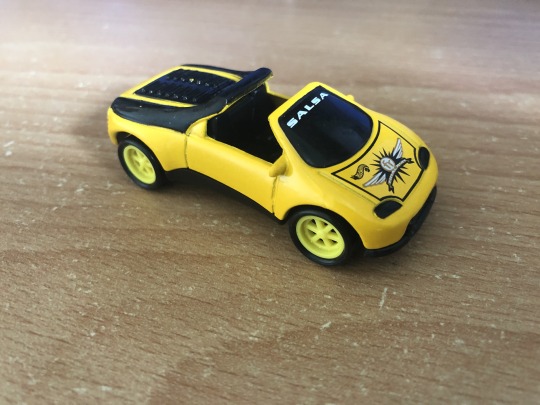
That Time Forgot: Pontiac Salsa
A car named after a sauce? Cute. But as usual, this was an actual concept car designed by GM. Want to know more? Let’s talk about it in today’s installment of That Time Forgot.
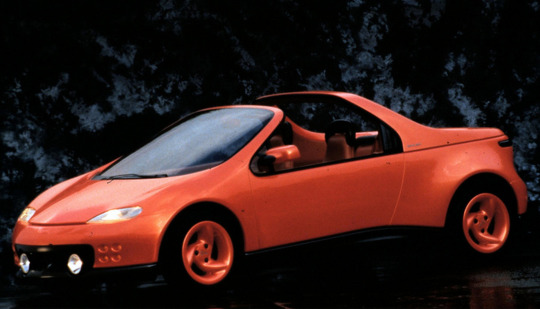
Conceived by GM’s Advanced Concept Center based in California, the Salsa was meant to be “an athletic small vehicle with modular parts”. We’ll get to that part later. The car was introduced at the 1992 Chicago Motor Show.

This small two-seat convertible with flowing three-spoke wheels was engineered to be as modular of a car as possible. In its standard configuration, the car was presented as shown above; however, it has a removable top and a removable rear end piece situated above the rollbar.

One module of the Salsa could be switched in to turn the car into a five-seat convertible.

The rear seats could then be folded forward to make this car a small pickup.

Another module was available which could turn the car into a small panel van.

Yet another module was available which could turn the car into a five-seat hatchback.

The interior of the car looked rather basic for the time, with a simple analog dashboard and a manual transmission. Any details about the powertrain or underpinnings of the car are unknown.

Advertisements involving the Salsa touted its modularity, but ultimately, the Salsa never came to be. Two cars were produced; presumably they are sitting amongst a sea of other cars at the GM Heritage Center, while the concept of modularity lives on today, predominantly in SUVs. The Salsa has been seen out of the collection a few times since, but it seems to have its unique three-spoke rims changed out.
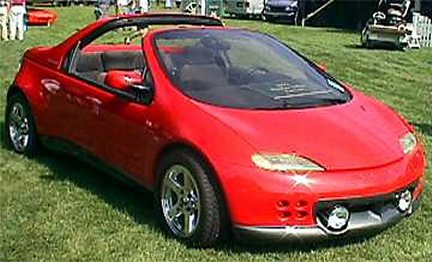
Now that we’ve gotten all the history of this thing out of the way, let’s talk about the reason why you’re here: the Hot Wheels version of the Salsa.
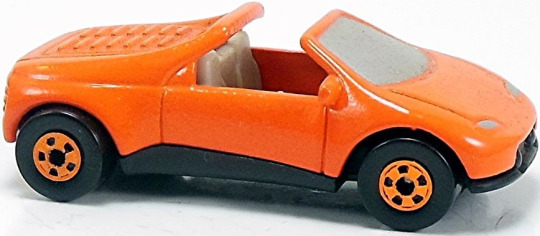
This casting was introduced in 1993 in the Demolition Man series, alongside eight other cars that appeared in the movie: these were the Oldsmobile Aurora, Olds 442 W-30, GM Ultralite, GM Lean Machine, Corvette Stingray III, Pontiac Banshee, Buick Wildcat and the Chevrolet ACC Camaro (’93 Camaro), intended to represent the Chevrolet California IROC Camaro Concept. The designer of this casting is not known with any certainty, although I suspect it was done by Larry Wood.
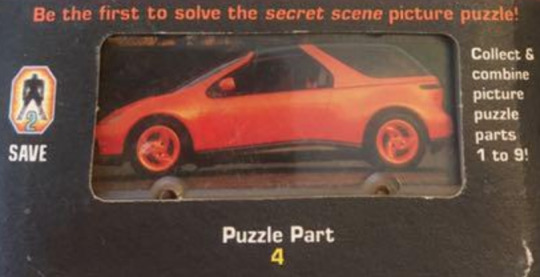
Something rather interesting is that despite the Salsa being in this series, the car apparently is not featured in the movie, unlike the other eight cars.

While a nice little casting, I have two minor gripes about the Salsa; these involve the windscreen and the rear. First off, the windscreen is another slab of metal which can’t be seen through, but I guess whatever works works.

The second gripe I have is with the rear, with the taillamp position resembling nothing like the real thing, but maybe this was something to do with a much earlier prototype.

I couldn’t find any colored images of the rear of the Salsa convertible, so this one will have to do. Compare it to the rear of the Hot Wheels model and you’ll see what I mean.
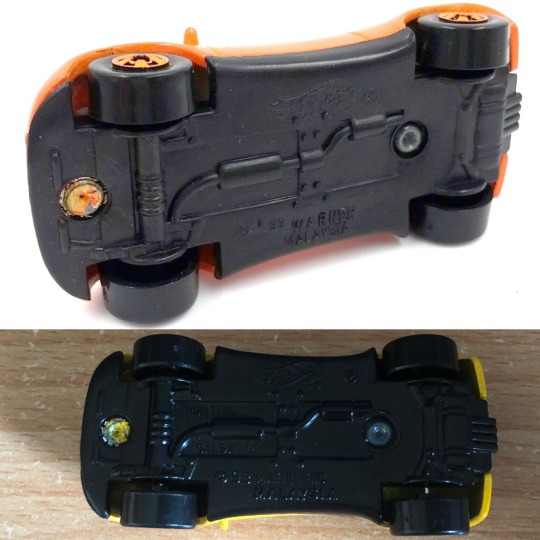
This casting has a plastic base, although it seems at least one of the versions has a metal base. Early versions will say "'93 WARNER” instead of “93 MATTEL INC” and “PONTIAC SALSA”; I presume the license with Warner Bros. had expired, so they just scrubbed off the Warner licensing information and put their own on.

The casting itself did not enjoy the frequent releases its other castmates had in the Demolition Man Series, but ultimately this casting was doomed in 1999 for one reason, and one reason only: the Final Run Series.

The Final Run Series started in 1999 and acted as what I would consider a very glorified funeral for a casting; Hot Wheels would give these cars special tires and paint, in exchange for vowing to never produce them again by cutting their toolings in half. The Salsa was unfortunately one of the castings to fall victim to the Final Run Series, and although it might not have been one of the more popular castings to retire that year, it was still retired regardless. As the first batch of cars to be Final Run, having been introduced in the 1999 series, the Salsa will never be seen again in the Hot Wheels lineup unless a new tool and die is created for it, which I believe is highly unlikely. The Final Run Series itself has been on hiatus since 2006. In total, the Salsa had nine releases.

I hope this post has given you a better idea on the history of this small but modular American convertible, and the history of its small Hot Wheels counterpart. As usual, I’d write something like this any day.
2 notes
·
View notes
Text
Free 50 List Hallmark legendary concept cars ornaments Image

Pin By A On Memorabilia Sports In 2021 Concept Cars Hallmark Hallmark Ornaments


Hallmark Itty Bittys Clark Griswold Christmas Vacation Plush Limited Edition In 2021 Clark Griswold Christmas Clark Griswold Christmas Vacation Griswold Christmas Vacation

Hallmark Holiday Book 2018 Ads And Deals Keepsake 45th Anniversary Enamel Pin 5 99buy Nowforty Five Years O Holiday Books Hallmark Holidays Christmas Angels

1953 Firebird Hallmark Ornament Hallmark Ornaments Concept Cars Metal Christmas Tree

Hallmark Keepsake 2018 Ornament 1938 Buick Y Job Legendary Concept Car Nib Concept Cars Buick Hallmark Keepsake Ornaments

Pin By Jhane Way On Classics Concept Cars Metal Ornament Custom Cars Paint

Piglet S Closet In 2021 Ornament Gifts Chips And Salsa Hallmark Ornaments

Presale Hallmark 2018 Legendary Concept Cars 1938 Buick Y Job Metal Ornament Hallmark Concept Cars Concept Classic Cars

Presale Hallmark 2018 Wonder Woman Ornament Justice League Batman Superman Hallmark Wonder Woman Ornament Superhero Christmas Wonder

Hallmark 2018 Mini Bitty Bat Halloween Ornament 1 41 Witch Hat Vampire Purple Hallmark Hallmark Ornaments Halloween Miniatures Halloween Bats

Pin On 2018 Hallmark Ornaments

Legendary Concept Cars 1938 Buick Y Job 2018 Hallmark Ornament Ebay Hallmark Ornaments Christmas Countdown Metal Christmas Tree

2019 Classy Lil Rocker Miniature Metal Ornament Hallmark Ornaments Horse Ornaments

2005 1968 Pontiac Firebird Classic American Cars 15 Pontiac Firebird Pontiac Car 15

2008 Hallmark Ornament Speed Racer The Mach 5 Car Qxi4341 Nib Speed Racer Hallmark Ornaments Racer

Hallmark Keepsake Ornament Goodnight Moon Hallmark Keepsake Ornament Goodnight Moon Christmas Tr Hallmark Keepsake Ornaments Keepsake Ornaments Good Night Moon

Hallmark 2018 Keepsake 45 Years Anniversary Cloisonne Enamel Pin Rocking Horse Ebay Hallmark Ornaments Baby First Christmas Ornament Hallmark Keepsake Ornaments

Nwt Nib 2019 Hallmark Keepsake 1953 Firebird Nib 2019 Hallmark Keepsake 1953 Firebird I Legendary Concept Cars Ch Metal Christmas Tree Concept Cars Easy Gifts

2008 1963 Chevrolet Corvette Z06 Classic American Cars Chevrolet Corvette Z06 Classic American Chevrolet Corvette

2007 1961 Chevrolet Corvette Mako Shark I 18 95 Chevrolet Corvette Corvette Concept Cars
0 notes
Photo

That Time Forgot: Buick Wildcat
Okay, who would have thought that there was a possibility for you to say “Buick” and “McLaren” in the same sentence? Well, this is quite possibly the only time you can do that. Today, let’s talk a bit about the nameplate’s history... as well as the casting, in today’s installment of That Time Forgot.

Before we talk about the Wildcat in question, let’s go back in time to 1953, when the first Wildcat was introduced.

Enter the 1953 Buick Wildcat, internally known as the Wildcat I. Designed under the direction of GM head of design Harley Earl, the Wildcat was designed for the sole purpose to see if it was feasible to put a fiberglass bodyshell on top of a car. The car was powered by a 322 ci (5.3L) Nailhead V8 producing 188 horsepower. With a wraparound windshield with a 60° slope, the Wildcat successfully influenced the design for Buick’s 1954 cars. After its tour of the auto show circuit complete, the Wildcat was sentenced to the scrapper, but was saved and is now in the hands of Joe Bortz.
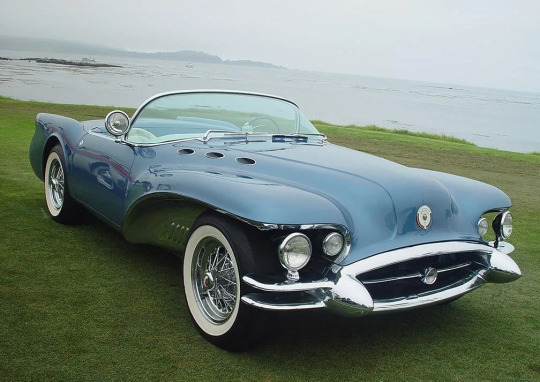
1954 came another Wildcat, internally dubbed the Wildcat II. Also designed under the direction of Earl, this Wildcat was a styling exercise, combining modern elements with classic styling from years gone past; it was because of this that Buick billed the Wildcat as an “American Adventure in Tomorrow's Design”. The car was powered by a 322 ci (5.3L) Buick Nailhead V8, producing 220 horsepower, and was specifically made to be fully functional (like the Wildcat I) in the event that GM chief Harlow Curtice wanted one for his own.
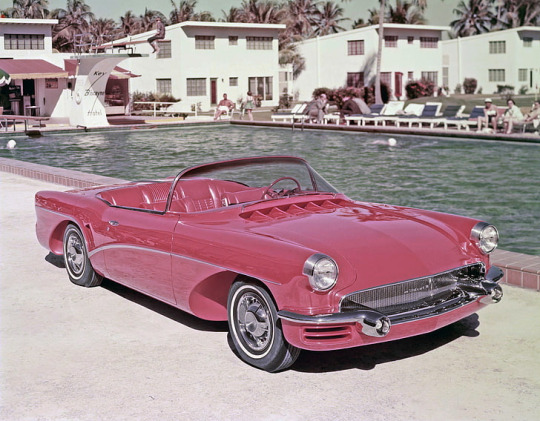
In 1955, another Wildcat came, internally designated... guess what. Also designed by Earl, the Wildcat III was probably the most conservative of the three 1950s Wildcat concepts, although it was quite a bit larger and longer than the previous two Wildcats. Powered by the same 322 ci (5.3L) Buick Nailhead V8 as the previous two Wildcats, the Wildcat III’s V8 was boosted to 280 horsepower with the help of a quad-carburetor setup. Nicknamed the “Toy Convertible”, the Wildcat featured a Twin Turbine Dynaflow 2-speed automatic transmission and featured rear seats, allowing for four passengers. After its tour of the auto show circuit was over, the Wildcat III was ordered to be junked; however, nobody really knows for sure what happened to it.
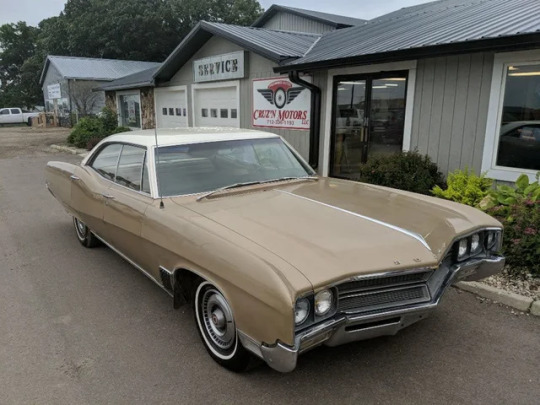
The Wildcat name was subsequently used for a number of full-sized automobiles produced by Buick from 1963 to 1970, but that’s not what you’re here for. Instead, you’re here for this: the 1985 Buick Wildcat.
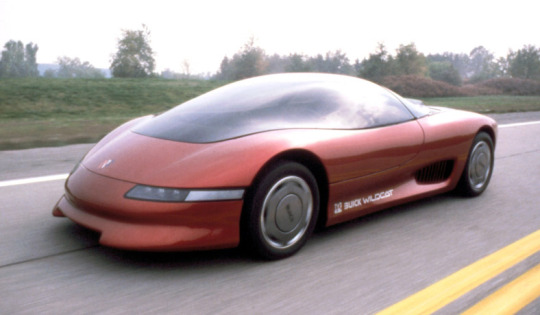
Some fifteen or so years after production of the Wildcat had halted, Buick came out with another Wildcat. This was a futuristic sports car featuring swoopy lines and a canopy which tilted forward for entrance and exit.
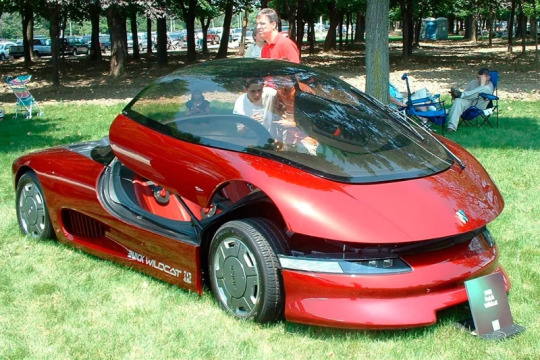
Two prototypes were produced; one non-running one that was showcased at SEMA in 1985, and one fully-functional prototype. The running prototype was powered by an experimental 3.8L Buick V6 built by McLaren Engines (no relation to the British car company).
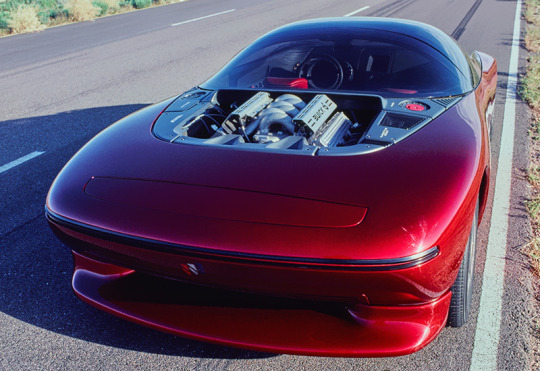
This exposed engine generated some 360 horsepower at 7,000 rpm and 398 lbf⋅ft (540 Nm) of torque. However, given the hardware this thing ran on, performance for the Wildcat... wasn’t that spectacular, with 0-60 mph (0-96 km/h) taking 8.6 seconds. The top speed for the Wildcat was actually electronically restricted to 70 mph (112 km/h); top speed figures for an unrestricted Wildcat remain unknown.

The body was made of fiberglass and carbon fiber, and the car featured a 4-speed transmission which could be manually shifted.
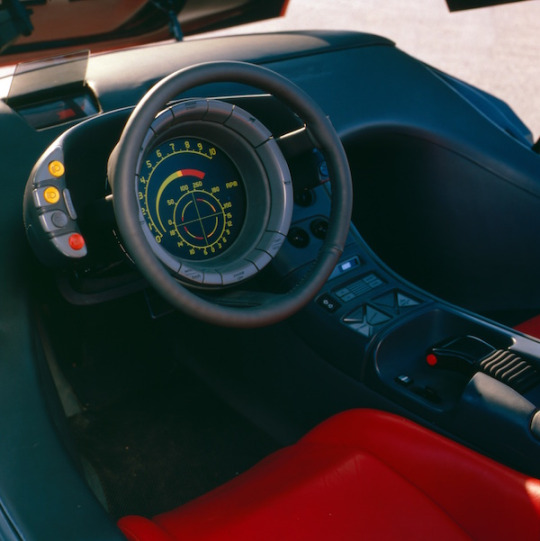
The interior of the Wildcat was highly advanced for its time, with a screen in the middle of the steering wheel display information such as G-force, torque, oil pressure and a compass. To add to that, a heads-up display was also added, displaying speed, mileage and gear selection on the glass canopy.
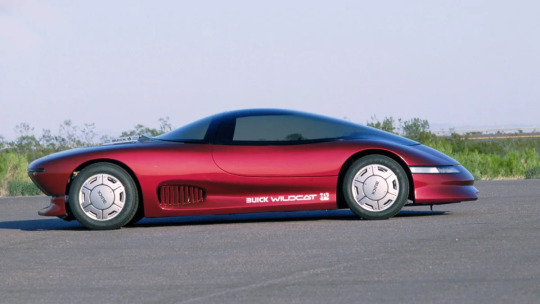
Despite all the high-tech features, all the Wildcats remained prototypes, and they now sit among a sea of other cars at the GM Heritage Center, with the exception of the Wildcat III (which isn’t there).

The Wildcat got its big break in the film industry when it appeared briefly in a scene in the 1993 film Demolition Man alongside some seventeen other GM concepts.
Okay, now that we’ve gotten all of this info out of the way, let’s get to the real reason why you’re here.

This casting was introduced in 1993 in the Demolition Man series, alongside eight other cars that appeared in the movie: these were the Oldsmobile Aurora, Olds 442 W-30, GM Ultralite, GM Lean Machine, Corvette Stingray III, Pontiac Salsa, Pontiac Banshee and the Chevrolet ACC Camaro (’93 Camaro), intended to represent the Chevrolet California IROC Camaro Concept. This casting was designed by Larry Wood. Something notable about the Wildcat was the “canopy” piece, which was simply the car’s body painted black.
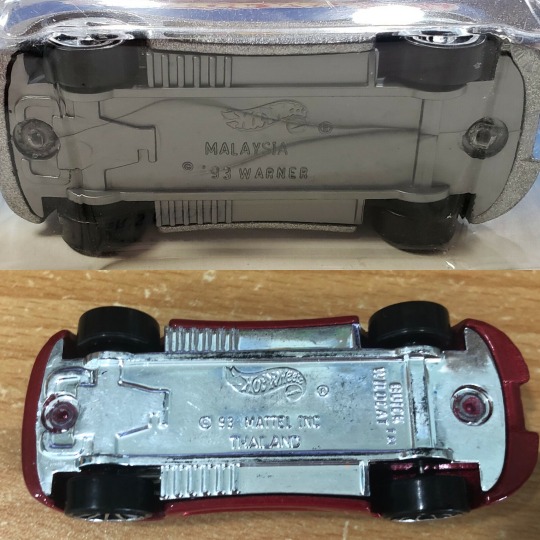
This casting has a metal base and plastic body. Early versions will say "'93 WARNER” instead of “'93 MATTEL INC” and “BUICK WILDCAT”; I presume the license with Warner Bros. had expired, so they just scrubbed off the Warner licensing information and put their own on.

The Wildcat enjoyed the privilege of being released quite often when it was in the lineup, but ultimately this casting was doomed in 2005 for one reason, and one reason only: the Final Run Series.

The Final Run Series started in 1999 and acted as what I would consider a very glorified funeral for a casting; Hot Wheels would give these cars special tires and paint, in exchange for vowing to never produce them again by cutting their toolings in half. The Wildcat was unfortunately one of the castings to fall victim to the Final Run Series, and although it might not have been one of the more popular castings to retire that year, it was still retired regardless. As the final batch of cars to be Final Run, having been introduced in the 2005 series, the Wildcat will never be seen again in the Hot Wheels lineup unless a new tool and die is created for it, which I believe is highly unlikely. The Final Run Series itself has been on hiatus since 2006. In total, the Wildcat had eighteen releases.
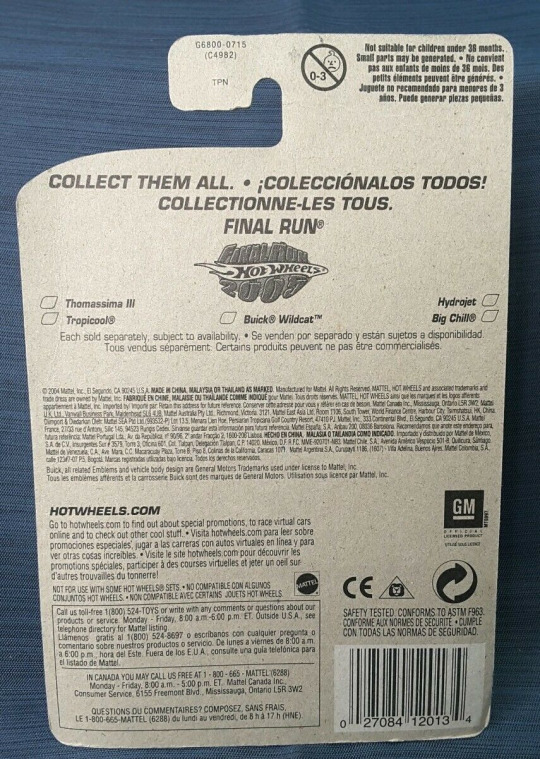
Of note is that the image above says that Tropicool (Good Humor Truck) is one of the castings that was intended to be Final Run; the actual casting that was Final Run was the Treadator, while Tropicool remains in the lineup to this day.

Always on the receiving end of very loud decals due to the large amount of space on the car, perfect for tampos, the Wildcat will be dearly missed (by me, at least) in the Hot Wheels lineup, and I wouldn’t mind seeing a modern recreation of the Wildcat return to the Hot Wheels lineup as a premium piece.
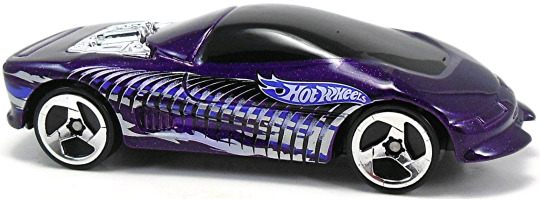
I hope this post has given you a better idea on the history of this futuristic American supercar, and the history of its small Hot Wheels counterpart. As usual, I’d write something like this any day.
1 note
·
View note
Photo

That Time Forgot: Corvette Stingray III
Wait, you’ve never heard of this Corvette? Well, that’s honestly to be expected since this car is practically forgotten among most circles... I think. So why don’t you grab a drink and sit down with me as I tell you the story of this Corvette concept. (and no, this isn’t the CERV)

The Corvette Stingray III was one of three entrants into a GM design contest staged by Chuck Jordan, GM’s vice-president of design at the time, in 1992. He had asked three studios to pen down their ideas for what would become the C5 Corvette... which would end up looking nothing like this. But back to our story.

Jordan’s favorite was what would be christened the Corvette Stingray III, as penned down by Chevrolet’s Advanced Concept Center based in California, led by John Schinella. It explored a radical rethink of the Corvette’s proportions, featuring a stretched wheelbase and being wider than the C4, along with the windshield pulled far forward and the tail bobbed. The fact that it was designed in California gave it the nickname of the California Corvette Concept. The car would be showcased at the 1992 North American International Auto Show in Detroit.

The car featured active suspension using four optical sensors to shine beams of light down on the undercarriage to adjust it automatically. Four-wheel steering was also featured as standard. The car has fixed seats, which may seem like a problem to some, although the low side sills and an instrument panel which articulates up when the doors open aids the driver or passenger in getting into the car and allowing for better knee clearance. The car also had an adjustable steering wheel and pedals to make up for the fixed seats.

The seat backs were raked to nearly a recumbent position, and the car featured a rather basic steering wheel; what was behind that steering wheel was far from basic, however, with an analog and digital dashboard.

Powering the car originally was a “high-output” V6 of an unknown capacity. When the car was showcased at the NAIAS, it wowed the crowds, but the Detroit-based design firms weren’t as pleased, especially when it came to the V6, which they felt was a step backwards. The engine may have been replaced by a 300 horsepower GM 5.7L LT1 V8 at some point, likely around the time the NAIAS rolled around.

The car was actually very close to seeing the light of day on the production side, although the $300,000 price tag for the thing really did not help the car’s case, even for a Chevrolet that could purportedly do 225 mph (362 km/h). As such, production plans were canned and the Corvette Stingray III remained a prototype. It now sits among a whole host of other GM cars at the GM Heritage Center, and various elements of all three Corvette designs were used in the final design of the C5 Corvette, which received rather lukewarm reception.

After its auto show debut in Detroit in 1992, the Corvette Stingray III got its big break on the big screen, where it made its movie debut in a car chase scene in the 1993 movie Demolition Man; the Stingray III only appeared very briefly in the movie as one of the “background cars”. The car was featured alongside some seventeen other General Motors concept vehicles lent by GM to the production crew for the film. After filming ended the car returned to the GM Heritage Center.
Okay, now that we’ve got all the history out of the way, let’s talk about the reason why you’re here; the history of the Hot Wheels version of the Stingray III.

This casting was introduced in 1993 in the Demolition Man series, alongside eight other cars that appeared in the movie: these were the Oldsmobile Aurora, Olds 442 W-30, GM Ultralite, GM Lean Machine, Pontiac Salsa, Pontiac Banshee, Buick Wildcat and the Chevrolet ACC Camaro (’93 Camaro), intended to represent the Chevrolet California IROC Camaro Concept. The designer of this casting is not known with any certainty, although I suspect it was done by Larry Wood.

This casting has a plastic base, although it seems at least one of the versions has a metal base. Early versions will say "'93 WARNER” instead of “Sting Ray III”; I presume the license with Warner Bros. had expired, so they just scrubbed off the Warner licensing information and put their own on.

This casting was last known to have been released in 2004 under the Track Aces series in this paint scheme. This casting may have been seen as late as 2007, although I have not been able to find any documentation or pictures of this release. The car has had a total of sixteen known releases; this number could possibly be seventeen because details of the 2007 release is unclear.

I hope you’ve learned something about this slick, streamlined concept car like I did while researching this. I’d write something like this again any day.
- Grunty
1 note
·
View note
Photo

That Time Forgot: GM Lean Machine
When we think about GM concepts, what do you think of? We have the GM LeSabre, the GM UltraLite... GM Lean Machine... hang on, GM Lean Machine? If you’ve never heard of it, that’s okay, because today we’re going to talk about it, in today’s installment of That Time Forgot.
Imagine being in a packed highway with a massive traffic jam. You look around you and discover that most of the cars have only one occupant in them and are much bigger than they need to be, considering that they only have one occupant in them: the driver. You’re also wasting a bit of fuel as well while waiting in this jam. You want a car that consumes less fuel and is big enough to seat a driver.

Enter the GM Lean Machine. The solution to personal mobility thirty years before the competition, the vehicle was described as “it may be the first new road vehicle invented this century”. Developed by a man named Frank Winchell, the design process of the Lean Machine took about seven years, with work beginning after the gas shortage of the early 1970s.

Powered by a 185cc Honda 2-cylinder engine through a Peerless tractor differential producing 15 horsepower driving the rear wheels, the single-seat Lean Machine was able to tilt through the use of pedals. These pedals were located in a similar place as a car’s pedals were; these were attached to cables which wrapped around the spine of the rear chassis. Pushing one of the pedals unwraps the cable and rotates the cabin away from the pedal, leaning the body away from the direction of the pressed pedal. Additionally, a Y-shaped tube held a steering head of a fork with a vertical extension holding a spherical bearing rod end, which was bolted to the end of the spine of the rear chassis; the chassis was also connected to the spine via a sleeve bearing at the rear of the seat. Those two bearings work in tandem as well for the tilting action to occur. The engine was started through a pull-start cable accessed through a hatch in the mobile motor cover.

As you can see from the photo above, the Lean Machine was small. The vehicle had a wheelbase of just 71 inches (180 cm) and featured a front tire from a bike and rear tires from a boat trailer; Showa forks were used to support the front bike tire. Other specifications are detailed below. To stop the vehicle, the passenger pod was to be put back upright and held there with the legs and then a lever engaged to keep the body upright. The car was supposed to be a single-seat car, although a second tandem seat could be easily added.

A total of three Lean Machines were built. The car was first showcased in 1982, a few months after Winchell’s retirement from GM, although he did appear in multiple interviews talking about his creation. One of the Lean Machines ended up at the now-closed Epcot attraction World Of Motion; it could theoretically hit 200 mpg, which would be an impressive number... if it could actually run. This non-running prototype can be identified by its unique bullet-like appearance with a narrow Kamm tail and dual contoured protruding side pods covering the rear wheels. The Epcot Lean Machine had a drag coefficient of 0.15.

The Lean Machine got its big break in 1993 when it appeared in the film Demolition Man, alongside some seventeen other GM concept vehicles. One of the two Lean Machines was used in this film, where it was briefly driven by Simon Phoenix (Wesley Snipes).

The third Lean Machine was presumably stored away after development was done. A small scale orange model of the Lean Machine was also built, although this time it was engineered as a flying car, but... really?

Unsurprisingly the idea never took off (pun intended) and the cars were subsequently stored. The Lean Machine was apparently recently seen at the Petersen Automotive Museum’s recently finished exhibition titled Hollywood Dream Machines: Vehicles Of Science Fiction And Fantasy, however I have been unable to find any pictures of the Lean Machine at that exhibition. The car has since returned to the GM Heritage Center, where I believe all the Lean Machines currently are.
Okay, now that I’ve gotten that out of the way, let’s talk about the reason why you’re here: the history of the casting.

This casting was introduced in 1993 in the Demolition Man series, alongside eight other cars that appeared in the movie: these were the Oldsmobile Aurora, Olds 442 W-30, GM Ultralite, Corvette Stingray III, Pontiac Salsa, Pontiac Banshee, Buick Wildcat and the Chevrolet ACC Camaro (’93 Camaro), intended to represent the Chevrolet California IROC Camaro Concept. The designer of this casting is not known with any certainty, although I suspect it was done by Larry Wood.

This casting has a metal base and body, giving it some substantial weight. It has a rather interesting two-piece body, where the “top portion” of the body is riveted onto the bottom portion with the fenders.

Early versions will say "WARNER ‘93” instead of “MATTEL INC 1993”; I presume the license with Warner Bros. had expired, so they just scrubbed off the Warner licensing information and put their own on.

The canopy of this casting can be removed to reveal a metal seat, as well as the two-piece construction. This canopy was often made of opaque black plastic and could not be seen through, but certain versions had see-through canopies.

The Alien enjoyed the privilege of being released quite often when it was in the lineup, but ultimately this casting was doomed in 2003 for one reason, and one reason only: the Final Run Series. For four years, this casting had not been seen, and then it was thrown into the Final Run series.

The Final Run Series started in 1999 and acted as what I would consider a very glorified funeral for a casting; Hot Wheels would give these cars special tires and paint, in exchange for vowing to never produce them again by cutting their toolings in half. The Lean Machine was unfortunately one of the castings to fall victim to the Final Run Series, and although it might not have been one of the more popular castings to retire that year, it was still retired regardless. As the fourth batch of cars to be Final Run, having been introduced in the 2003 series, the Alien will never be seen again in the Hot Wheels lineup unless a new tool and die is created for it, which I believe is highly unlikely. The Final Run Series itself has been on hiatus since 2006. In total, the Lean Machine had fifteen releases.

Always on the receiving end of very loud decals due to the large amount of space on the sides of the car, perfect for tampos, the Lean Machine will be dearly missed (by me, at least) in the Hot Wheels lineup, and I wouldn’t mind seeing a modern recreation of the Lean Machine return to the Hot Wheels lineup as a premium piece.

I hope this post has given you a better idea on the history of “probably the first new vehicle of the 21st century”, and the history of its small Hot Wheels counterpart. As usual, I’d write something like this any day.
- Grunty
1 note
·
View note
Photo

The Shape of Things To Come
On the suggestion of someone I know on my Instagram, this is sort of like a “to-do list” of sorts of stuff to expect from me in the near future. You can suggest stuff to me on Instagram or here, it’s up to you. But right now, here’s the Shape of things to come on this blog.
SEGMENTS Casting Call: I talk about a casting through my analysis of it. That Time Forgot: I fuse history and Hot Wheels together by talking about a long-forgotten concept car made into a Hot Wheels car. Tooling Talk: I talk about retools and other tooling stuff. Candid Conversation: Candid conversation about various topics, such as special features on Hot Wheels cars and other Hot Wheels general knowledge. Formerly known as “Talking Point”. Grunty’s Goodbyes: I bid goodbye to a casting that has been retired.
Casting Call Nothing planned
That Time Forgot Zender Fact4 BiTurbo (in the works!) IAD Alien (up next) Hyundai Neos Buick Wildcat Pontiac Banshee GM Lean Machine Pontiac Salsa
Tooling Talk Custom ‘69 Chevy Pickup Fast Gassin’ Fast Fortress XS-IVE
Candid Conversation Nothing planned
Grunty’s Goodbye ‘96 Ford Mustang GT Ambulance
This list will continually be updated as I come up with more ideas or more suggestions flow in. In other news... please enjoy the shape of things to come.
- Grunty
1 note
·
View note
Text
View 36 Best Hallmark legendary concept cars ornaments Lock Screen Wallpaper

2019 Classy Lil Rocker Miniature Metal Ornament Hallmark Ornaments Horse Ornaments


Hallmark 2018 Mini Bitty Bat Halloween Ornament 1 41 Witch Hat Vampire Purple Hallmark Hallmark Ornaments Halloween Miniatures Halloween Bats

Hallmark Keepsake Ornament Goodnight Moon Hallmark Keepsake Ornament Goodnight Moon Christmas Tr Hallmark Keepsake Ornaments Keepsake Ornaments Good Night Moon

2005 1968 Pontiac Firebird Classic American Cars 15 Pontiac Firebird Pontiac Car 15

Hallmark Keepsake 2018 Ornament 1938 Buick Y Job Legendary Concept Car Nib Concept Cars Buick Hallmark Keepsake Ornaments

Piglet S Closet In 2021 Ornament Gifts Chips And Salsa Hallmark Ornaments

Hallmark 2018 Keepsake 45 Years Anniversary Cloisonne Enamel Pin Rocking Horse Ebay Hallmark Ornaments Baby First Christmas Ornament Hallmark Keepsake Ornaments

1953 Firebird Hallmark Ornament Hallmark Ornaments Concept Cars Metal Christmas Tree

Presale Hallmark 2018 Legendary Concept Cars 1938 Buick Y Job Metal Ornament Hallmark Concept Cars Concept Classic Cars

2007 1961 Chevrolet Corvette Mako Shark I 18 95 Chevrolet Corvette Corvette Concept Cars

Hallmark Itty Bittys Clark Griswold Christmas Vacation Plush Limited Edition In 2021 Clark Griswold Christmas Clark Griswold Christmas Vacation Griswold Christmas Vacation

2008 1963 Chevrolet Corvette Z06 Classic American Cars Chevrolet Corvette Z06 Classic American Chevrolet Corvette

2008 Hallmark Ornament Speed Racer The Mach 5 Car Qxi4341 Nib Speed Racer Hallmark Ornaments Racer

Legendary Concept Cars 1938 Buick Y Job 2018 Hallmark Ornament Ebay Hallmark Ornaments Christmas Countdown Metal Christmas Tree

Pin On 2018 Hallmark Ornaments

Nwt Nib 2019 Hallmark Keepsake 1953 Firebird Nib 2019 Hallmark Keepsake 1953 Firebird I Legendary Concept Cars Ch Metal Christmas Tree Concept Cars Easy Gifts

Hallmark Holiday Book 2018 Ads And Deals Keepsake 45th Anniversary Enamel Pin 5 99buy Nowforty Five Years O Holiday Books Hallmark Holidays Christmas Angels

Pin By A On Memorabilia Sports In 2021 Concept Cars Hallmark Hallmark Ornaments

Pin By Jhane Way On Classics Concept Cars Metal Ornament Custom Cars Paint

Presale Hallmark 2018 Wonder Woman Ornament Justice League Batman Superman Hallmark Wonder Woman Ornament Superhero Christmas Wonder
0 notes
Photo

That Time Forgot: GM Ultralite
I kind of like this new life of mine, being able to pursue my own interests and stuff. However, I feel it is a disservice to keep this blog inactive, hence why I’ve decided to put this post up to show that this blog is not dead. Anyway, enough talk about this, and let’s talk about what you’re really here for: to talk about this car.
“100 mpg in the ‘90s? Impossible.” Is what many people will say... but they’ve definitely not seen this car before. Let’s talk about that.

This is the General Motors Ultralite, a car from 1992 that still looks futuristic... even today. Designed by Burt Rutan, Jim Lutz, Steve Small, Bill Rohlfing and Jim Bieck, the Ultralite was designed as a four-seat car that could comfortably carry all four passengers, have adequate performance and produce low emissions and astonishingly high miles per gallon.

First introduced at the 1992 Chicago Auto Show, the Ultralite was not just your normal concept car; it was actually fully functional. But then again, pretty much all of GM’s concept cars of that time were functional. This car featured a RR layout; or for those who don’t know, rear-engined, rear-wheel drive. A ten-minute promotional video was also produced.

The body of the Ultralite was made of carbon fiber and built by Scaled Composites; the entire body only weighed 420 pounds (191 kg)! With the body on, the car weighed about 1400 pounds (635 kg).

Performance of the Ultralite was expected to match or better that of GM’s quintessential compact sedan, the Chevrolet Lumina. As the body itself was so light, the Ultralite didn’t need too big a power plant to power it. The rear-engined car was powered by a 1.5L inline-3 two-stroke engine producing 111 horsepower, mated to a Saturn 4-speed automatic transmission; GM claimed top speeds of up to 135 mph (217 km/h). It also had a claimed 0-60 time of about 8 seconds, which, if you think about it, is pretty darned good for an engine of this size...

The Ultralite’s engine was placed in the rear in what was termed a “power pod” configuration, which was basically GM’s term for “removable engine”; this reminds me of the IAD Alien which had a very similar concept. This “power pod” had a number of advantages, including easier service and the added modularity of fitting different types of power plants.

The shape of the Ultralite was highly reminiscent of that of the older Ford Probe concepts designed by Ghia.

The interior looked somewhat futuristic and honestly quite nice, but the best part of the Ultralite’s appearance... were those doors.

Yep, that’s right; the Ultralite sported gullwing doors. It also... had no B-pillar.

Regardless, the Ultralite was probably one of the most futuristic cars ever conceived. Featuring fiber-optic headlamps and LED taillamps, the car also featured an airbag suspension on all four wheels, allowing it to ride high or low depending on what speed the car was going at. It also had an astonishingly low drag coefficient of 0.19, far lower than most cars of the time.

While the doors were (and still are) quite impressive, quite possibly one of the most impressive things about the Ultralite was its fuel economy. The car (being fully functional) was actually tested and rated by the EPA, clocking in a staggering 88 mpg; GM claimed the car could clock in 100 mpg if the car was driven at a sustained 50 mph (80 km/h) cruise.

GM did consider putting the Ultralite into production, although with a body made of carbon fiber it would have never been affordable. Additionally, with California’s zero-emission vehicle mandate looming, GM made a decision to scrap the Ultralite and produce the EV1 (above) instead. And we all know how that went...

However, not all was lost. Now, with the introduction of ever-tighter Corporate Average Fuel Economy standards, carbon fiber has become almost mainstream and smaller and smaller engines have become the norm to meet these strict standards, something the Ultralite was able to achieve... twenty years before the competition.

A total of two Ultralites were produced. Normally, I believe they sit amongst a sea of other innovative cars at the GM Heritage Center, but one Ultralite currently sits proudly amongst a sea of iconic movie cars in the Hollywood Dream Machines: Vehicles of Science Fiction and Fantasy exhibition at the Petersen Automotive Museum. Oh, speaking of movies... we’ll get to that bit now.

Due to its unique and futuristic shape, the Ultralite has been used in various science fiction movie productions, usually representing a car of the future. It had a number of big breaks in a number of science fiction films, all of which will be detailed below.

The most notable of the Ultralite’s appearances was in 1993, when it appeared in the film Demolition Man, alongside some seventeen other GM concept vehicles. Representing a 2042 Chevrolet police vehicle, this Ultralite was driven throughout the film and played a highly prominent role.

Twenty fiberglass replicas of the Ultralite were produced, which were used throughout the film as either police cars or civilian cars, recognizable by whether they have the “siren dome” or not; civilian Ultralites usually played minor background roles. There exists a rather grainy picture showing three of these replicas. Whether the two actual carbon fiber Ultralites took part in the filming is unclear, although it seems unlikely.

The Ultralite was seen again in the old television series seaQuest DSV, albeit only very briefly, in the episode The Fear That Follows which aired in 1994.

The Ultralite was seen again in the 1999 film Bicentennial Man starring Robin Williams, although again very briefly. Sure, it’s a cool car that’s in the movie, but there’s probably other reasons as to why people don’t remember this film...

Finally, a police Ultralite appeared in the movie A.I. Artificial Intelligence starring Haley Joel Osment. This was the last of its known appearances... well, according to IMCDb anyway.

It also appears that at least one of these fiberglass replicas was auctioned off by Warner Bros. around 2012, although with some generic police livery; as you can see, it looks pretty worse for wear...
Okay, now that I’ve gotten that out of the way, let’s talk about the reason why you’re here: the history of the casting.

This casting was introduced in 1993 in the Demolition Man series, alongside eight other cars that appeared in the movie: these were the Oldsmobile Aurora, Olds 442 W-30, GM Lean Machine, Corvette Stingray III, Pontiac Salsa, Pontiac Banshee, Buick Wildcat and the Chevrolet ACC Camaro (’93 Camaro), intended to represent the Chevrolet California IROC Camaro Concept. The designer of this casting is not known with any certainty, although I suspect it was done by Larry Wood. The Hot Wheels version of the Ultralite depicts the famous police Ultralite as seen in the movie, as evidenced by the siren dome up top.

Like all other Demolition Man castings, the Ultralite was packaged in a box containing a Cryo-Cube (essentially a Park’n Plates box with a picture of the real car instead of a license plate). The windshields and doors of this casting are molded into the body, and as such, are completely opaque; as a result, this car has no interior.

The rear replicates the rear of the real car somewhat well, although the wing up top seems a bit high and the rear “vent” seems a little bit too big as well compared to the real car.

A picture of the real Ultralite’s rear is shown above.

Early versions will say "‘93 WARNER” instead of “1993 MATTEL, INC”; I presume the license with Warner Bros. had expired, so they just scrubbed off the Warner licensing information and put their own on. Something else interesting to note is that this casting has a practically centered center of gravity; as it has a plastic base, this casting would be thought to be quite light, but it is in no way light. As the body is one huge hunk of metal (again, the windows are opaque), the Ultralite is supremely heavy, with all the weight concentrated around the center of the car. This theoretically makes the car better for downhill races, although I would seriously doubt the car’s ability to clear a loop.

The Ultralite enjoyed various releases in the Hot Wheels lineup, most of which having the SAPD-style police livery on it, whether it be with or without SAPD graphics.

This casting was also given the generic name “Police Car” for one of its releases.

Another release simply titled it “Police”, although I believe this is an international only release and doesn’t seem to be documented all that well. Both “Police Car” and “Police” would be used on future releases of the Holden Police Cruiser Hot Wheels released in 1996.

The Ultralite enjoyed the privilege of being released quite often when it was in the lineup, but ultimately this casting was doomed in 2001 for one reason, and one reason only: the Final Run Series. For three years, this casting had not been seen, and then it was thrown into the Final Run series.

The Final Run Series started in 1999 and acted as what I would consider a very glorified funeral for a casting; Hot Wheels would give these cars special tires and paint, in exchange for vowing to never produce them again by cutting their toolings in half. The Ultralite was unfortunately one of the castings to fall victim to the Final Run Series, and although it might not have been one of the more popular castings to retire that year, it was still retired regardless. As the second batch of cars to be Final Run, having been introduced in the 2001 series, the Ultralite will never be seen again in the Hot Wheels lineup unless a new tool and die is created for it, which I believe is highly unlikely. The Final Run Series itself has been on hiatus since 2006. In total, the Ultralite had seven releases.

Of note is that the image above has some interesting details. The Ultralite was released simply as the “Ultralite” in the Final Run series, but its full name is spelled out in the rear of these cards. “Garbage Truck” refers to the Recycling Truck, but it gets a pass since the casting was actually titled that for release. “Porsche 911” refers to the P-911 casting, but that gets a pass for the same reason. And finally, “Scullrider” refers to the Skullrider (or Grim Creeper) casting; this is simply a spelling error and the casting received the correct spelling on the actual production card.

Always on the receiving end of police-styled decals due to its fame in Demolition Man, the Ultralite will be dearly missed (by me, at least) in the Hot Wheels lineup, and I wouldn’t mind seeing a modern recreation of the Ultralite return to the Hot Wheels lineup as a premium piece.

I hope this post has given you a better idea on the history of this futuristic GM concept car, and the history of its small Hot Wheels counterpart. As usual, I’d write something like this any day.
1 note
·
View note